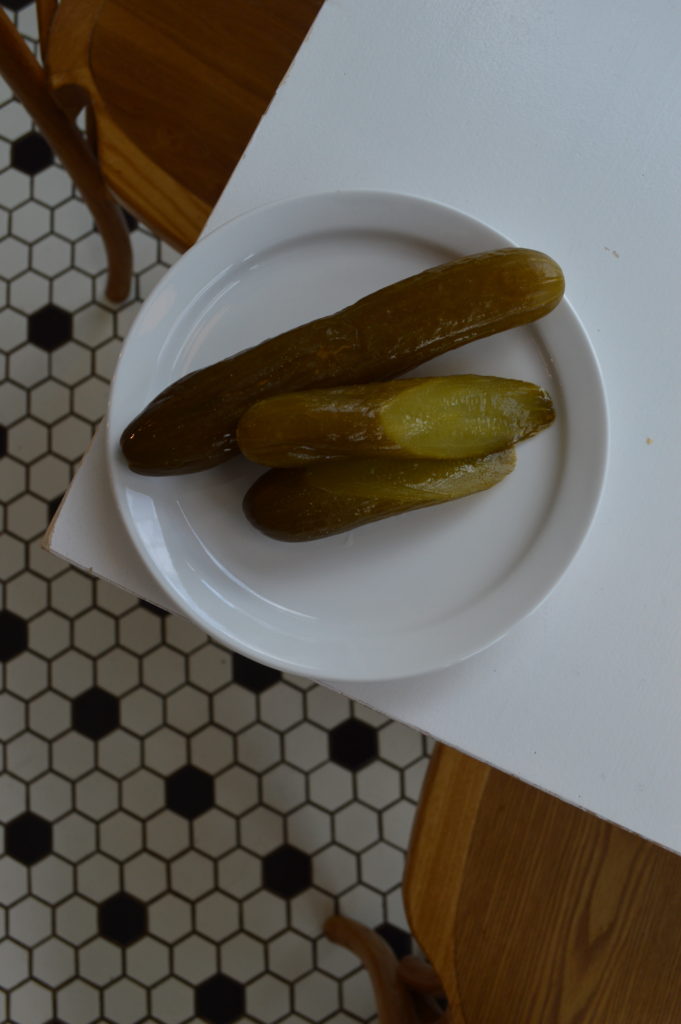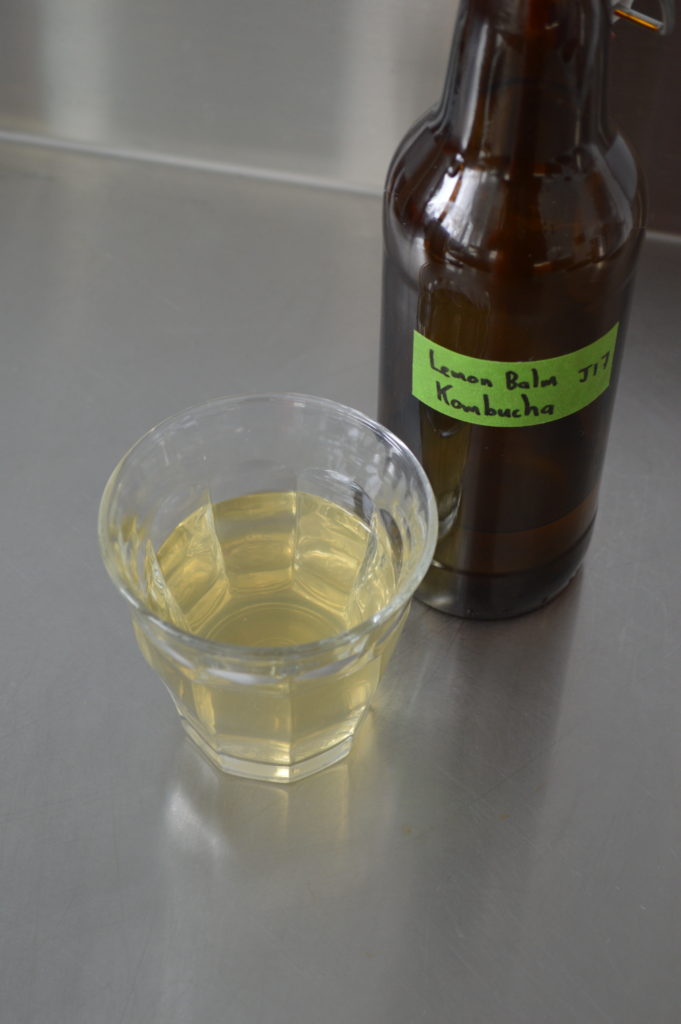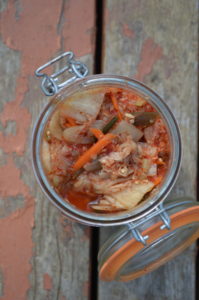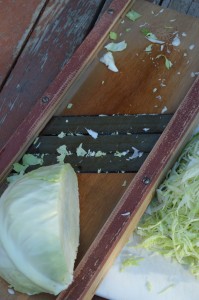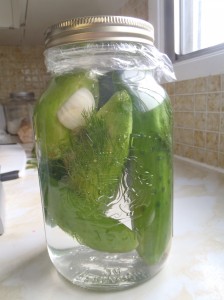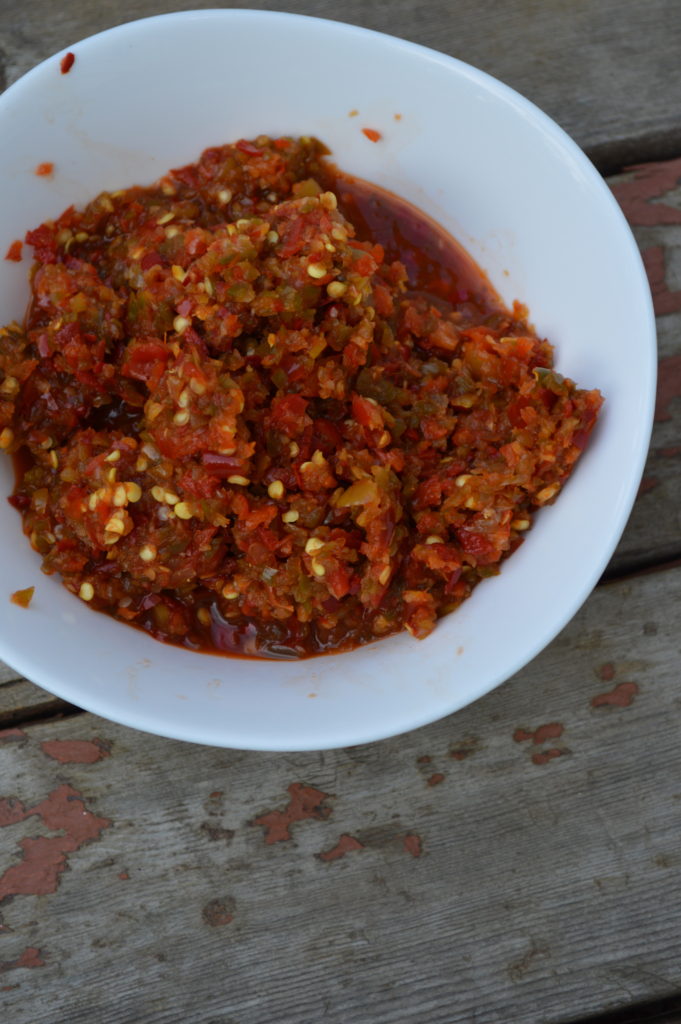
With so many peppers coming from the garden and fermentation on the brain I wanted to try my own fermented chili paste. My recipe is very much like sambal in terms of ingredients and consistency, though sambal isn’t usually fermented. Korean gochujang is a fermented chili paste, but it includes a large proportion of starches like rice, soybean, and malted barley and is not a straight lacto-fermentation. So this preparation isn’t really of a traditional style, but it turned out quite good and I can definitely see it becoming a pantry staple.
One of the main reasons I think I’ll make this every year: you can process a large quantity of peppers very quickly. Simply chop coarsely, pulse a few … Continue reading.

